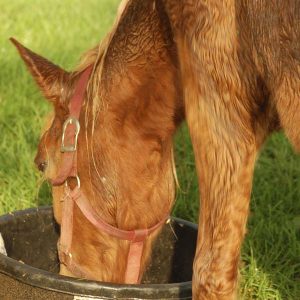
Horse Health Tidbit: Managing PPID
PPID, once known as Cushing’s disease, is now commonly referred to as pituitary pars intermedia dysfunction. In PPID, a portion of your horse’s pituitary gland becomes enlarged and produces higher than normal amounts of hormones. The excess hormones cause imbalances in your horse’s body. Researchers feel most older horses (16+ years) are at risk of developing PPID. If caught early, treatment can help reduce the damage done by the disease before it adversely affects your horse’s quality of life.
Early symptoms of PPID include:
- Slow or incomplete shedding of the winter coat
- Long, curly hair coat
- Long hairs under jaw and belly that don’t shed out
- Loss of muscle mass
- Fat budges above the eyes, on crest or tail head
- Increased water consumption; a wetter stall
- Persistent skin infections (rain rot or scratches)
- Recurring foot abscesses
- Chronic laminitis
- Grumpy and/or lethargic attitude
If your horse has any of these symptoms, contact your veterinarian and set up a physical exam.


